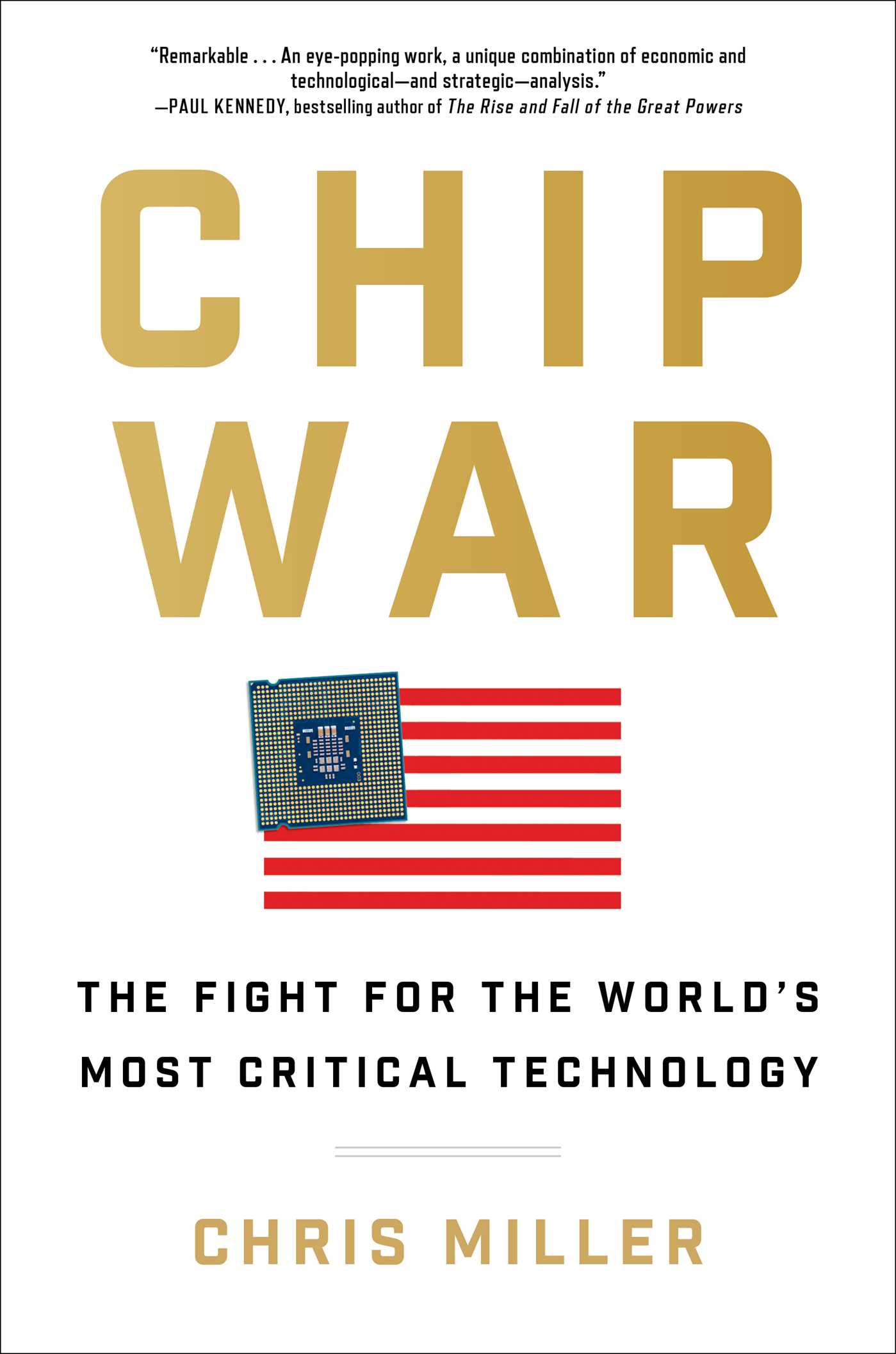
Chris Miller’s Chip War: The Fight for the World’s Most Critical Technology is the rare business and geopolitics book that reads like a techno-thriller. It explains how tiny slices of silicon came to power everything from smartphones and dishwashers to guided missiles and AI data centers, then shows why control of those chips now shapes national security, economic growth, and the balance of power in the twenty first century.
What the book covers
Miller structures the narrative across decades, moving from the early Cold War to today’s uneasy standoff. Along the way he traces the industry’s breakthrough moments and its choke points. Readers new to semiconductors will get a clean primer on the basics: logic vs. memory, why transistors matter, and how Moore’s Law set the cadence for exponential progress. Veterans of the tech world will still learn something new, whether it is the Texas Instruments roots of Morris Chang before he founded TSMC, or the centrality of ASML’s extreme ultraviolet lithography machines that only a handful of companies on earth can operate.
The book is especially strong when it zooms in on the manufacturing reality. Making a modern chip is one of the most complicated industrial feats humans attempt. It requires pristine fabs, globalized supply chains, and thousands of precision steps that must all succeed or nothing works. Miller shows how a few nodes in that chain control the fate of the whole system. TSMC’s dominance in advanced logic, ASML’s monopoly in EUV, and niche suppliers in optics, gases, and chemicals together form a high wire act that leaves the world vulnerable to disruption.
Geopolitics without jargon
Where Chip War earns its reputation is in connecting technical detail to real world consequences. Miller explains how US military superiority has long depended on applying computing power better and faster than rivals, and how the diffusion of manufacturing to Asia created unavoidable risk. Taiwan’s outsized role means any crisis in the Taiwan Strait would ripple through everything from phones and cars to medical devices and energy systems. He also shows why China’s massive investments aim at self sufficiency, why theft of intellectual property became part of the story, and how allied controls on advanced tools reflect a “small yard, high fence” strategy.
Policy readers will appreciate the treatment of the CHIPS Act and the sober reminder that fabs take years to build, cost eye watering sums, and still require a global network to function. Business readers will find useful context for the rise of Nvidia and ARM, the stumbles of Intel, and the shifting mix of data center, smartphone, and automotive demand.
What readers loved
Reviewers with industry experience highlight how engaging the historical sweep is. The book clarifies the roles of Fairchild, Intel, and Japan’s memory surge, and it demystifies the physics behind lithography without drowning the reader in math. The sections on precision weapons and guidance systems show how chips changed warfare, turning abstract transistor counts into lived consequences on the battlefield. Many readers called out the eye opening portrait of ASML’s EUV tool as the most complex machine in commercial use and a genuine geopolitical lever.
Where it may test your patience
Not every chapter lands with the same punch. The deep dive into Japan’s rise in DRAM and the blow by blow account of trade skirmishes will be catnip for supply chain nerds and a slog for others. A few readers wished the modern China sections were longer, given how central that contest has become. Still, the throughline is clear, the storytelling crisp, and the payoff worth it.
Bottom line
Chip War is essential reading if you work in tech, invest in it, cover it, or simply rely on products that contain a chip, which is to say almost everyone. It makes the semiconductor ecosystem legible without dumbing it down, and it frames the geopolitical stakes with clarity. You will walk away understanding why a single tool maker in the Netherlands matters to AI progress, why a single island’s fabs matter to global GDP, and why industrial policy is back in the headlines.
Rating: 5 out of 5 stars
Ready to see why chips are the real oil of the digital age
👉 Get your copy on Amazon


